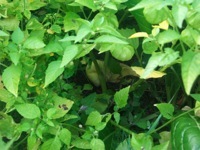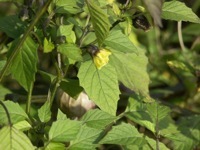
Ta-To
TAGETES LUCIDA
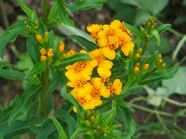
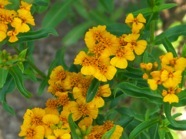
How about this: a relative of marigold, as easy to grow and the leaves taste like tarragon! I like this one a lot, it produces quite a bit of nice-tasting leaves which can be used the way ‘true’ tarragon can be used. Sow the seeds in late spring, and plant them in a sunny spot whenever the last chance of frost has disappeared, the plants are low-staying and produce lots of leaves, and later on, flowers and eventually seeds.
TAGETES MINUTA
This is one that has been tried out in organic cultures to suppress the weeds. The plants grow huge, over two metres, and smother many weeds under them, but still couch grass and other weeds survive. I don’t care too much for really removing all the weeds, so I leave these...And the plants are an excellent compost material.
Tagetes minuta is mainly used as an alternative for quilquina, although tastes are different, this tagetes is a sharper tasting herb. In SouthAmerica the this plant is used a lot and mainly known under the name ‘wacatay’.
As you can see, the leaves resemble the cannabis plants (which is , by the way, a very useful plant), but the flowers are very different, as is the scent. Speaking of this, my partner can’t stand this smell, she really gets annoyed when she smells it, so there is probably something really irritating in the plants, at least for some people...
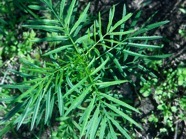
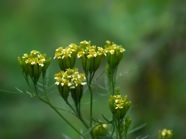
TOMATILLO
The unknown alternative for tomatoes, which are the main ingredient in Mexican ‘salsas’. Tomatillos (physalis ixocarpa) are grown for the fruits, who are ripe whenever their husks start to dry. They’re a fast-growing plant, best started indoors a few weeks before the last frosts, and planted out whenever the frost risk has gone. The plants are more wide than large (mainly because of the weight of the fruit), and can produce 2-3 kgs of ripe fruits on each plant.
There are again lots of varieties, yellow, purple and green are the dominant colours, sizes of the fruits vary greatly, some are just over 2 cms, while other varieties reach 5 cms or even more.
Now, the taste: this is a controversial one, it’s a bit acid, but I think the taste is good (many other people dislike it), a nice sauce can be made with tomatillos, garlic, chilis, coriander,...
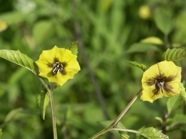
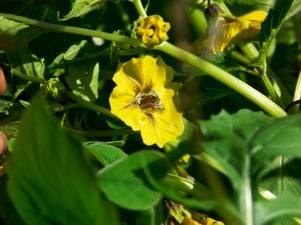
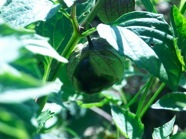
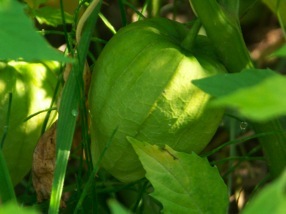
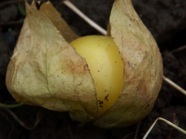
TOMATO
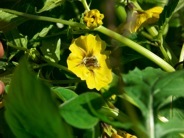
Over the last ten years or more, interest for growing and preserving old varieties of tomatoes has increased a lot. I truly appreciate this, but there’s a risk: so many people seem to be focusing on tomatoes, that some other thing, harder to grow or harder to get some seeds from (I’m thinking of all sorts of grains, brassicas, onions, carrots,...) risk being neglected.
Anyway, it’s really good so many tomatoes are being preserved, growth manuals can be found everywhere, there are thousands of varieties, and here comes the but: late blight off course (phytophtora infestans)... This makes growing out tomatoes nearly impossible over here, though over the past few years I have found some tomatoes with an amazing late blight resistance: the two best ones are up to now humboldtii and tomatito de jalapa, both have wild origines and are therefore more resistant...
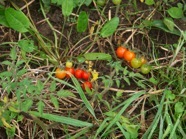
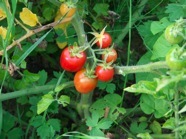
TOOTHACHE PLANT
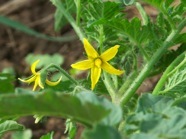
A tropical plant that’s quite easily grown out over here, the toothache plant (spilanthes oleracea) is also known as Brasil cress or para cress. Sow the seeds in a warm place, and plant them out whenever the soil is warm enough. They grow rapidly to a nice little bush, with yellow or yellow-red flowers (depending on the variety) on top of them.
The leaves are added to salads, they do have a strong taste and if you don’t like that, don’t use them (or don’t grow the plants). And the name toothache plant says it all: if you have a toothache, chew some fresh leaves and your toothached will be relieved for a short while.




